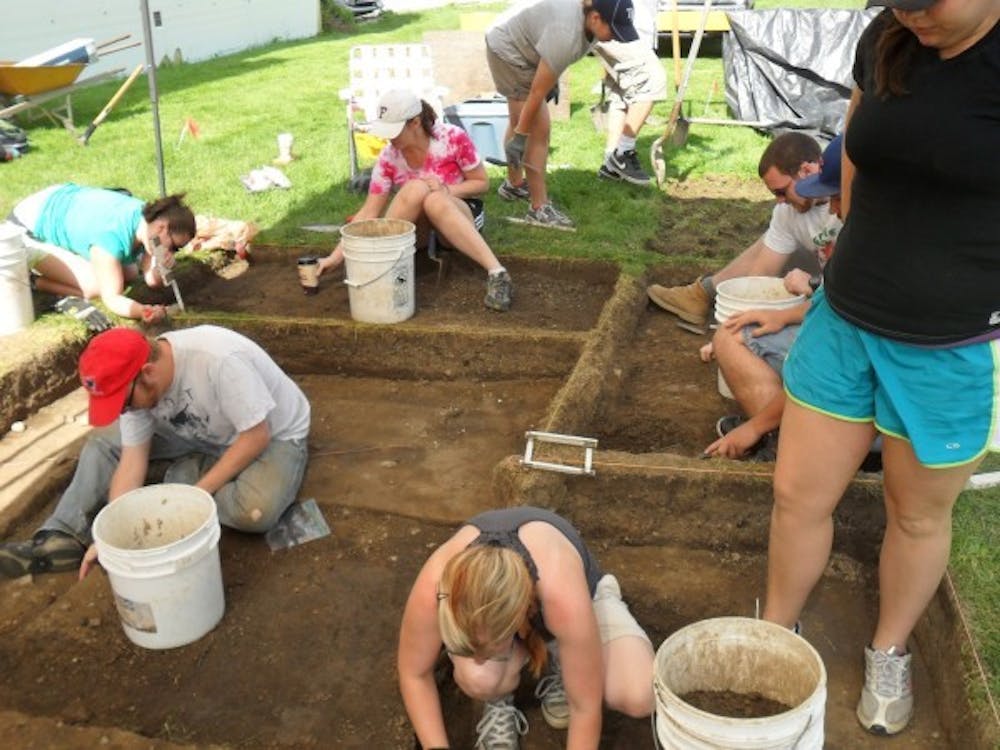Ball State students discovered part of what they believe to be the remains from a historic Northwest Indian War battle site in Ohio.
The students combined their historical knowledge of the 1791 battle on the Wabash River and the 1794 Battle of Fort Recovery to confirm their discovery.
Senior archeology major Tyler Wolford said they found a tiny spot of what they believe is a trench of Fort Recovery. The group dug within a single unit about four or five layers to find it.
"The original unit could only put the very tiny corner of it so we had this little tiny sliver of what we think it is," he said. "So if we would have placed the unit just a little bit over, a little bit the other way, we might have missed it."
After having a professional do a ground penetrating radar projection of what was beneath the ground, students began digging once they saw something they could tell wasn't the foundation of a house or building, a pipe or anything they could recognize, Wolford said.
The group began digging a rectangular unit that was one meter by two meters. They dug down in layers of 5 centimeters and documented everything they saw for records.
The group expanded units across the site where they found the original sliver, and they found a 17 feet by 2 feet stockade wall trench, anthropology associate professor Mark Groover said.
Ball State archeologist Christine Keller said the Fort Recovery project fits in with Ball State's emphasis on immersive learning.
"They will use these skills when they go look for a job," she said. "They are working with members of the pubic and other professional archeologists. They are working with students within their own department and in other departments."
The project is funded by a $70,000 grant Ball State received by the American Battlefield Protection Program. The group was issued the grant to find data and analysis about the boundaries of each battle.
Wolford said the project was interesting because the site is often visited by other archeologists.
About 20 students are involved in the program with majors including anthropology,history andarcheology. Anthropology professors Mark Hill and Colleen Boyd and history professor Dan Ingram also helped lead the students through various projects in Fort Recovery.
The students used metal detectors, magnetometers and resistivity on the field study. The project ends Friday.
Wolford said the experience will definitely help when he's looking for a job.
"It is one thing to read about something in a book," he said. "It is one thing to be part of a project in class or something, but to go out and really be part of [the process] ... you really get a feel for it and how that process works."



